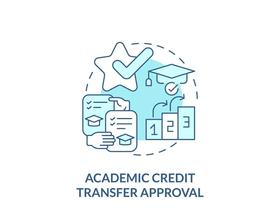Recent statistics have shown that it takes much more than a simple decision to attend community college to succeed in one of these institutions. In California, only 30% of community college students are receiving the benefits a college education can offer.
Study Results Concerning
A new study conducted by the Institute for Higher Education Leadership & Policy at Cal State Sacramento and reported by the Los Angeles Times found that the large majority of community college students failed to obtain a degree or transfer to a four-year institution. These students typically dropped out – some with a significant amount of debt and no degree to help them. In addition, only 40% of community college students achieved sufficient credit hours in school to boost their potential in the workforce.
The study also found a large disparity between minority and Caucasian students, with only 26% of African-American students and 22% of Latino students earning a degree, certification, or transfer to a four-year university within six years. This compared to 37% of Caucasian students or 35% of Asian Pacific Islanders who saw success in community college. One possible reason for the difference is that many minority students in the California public school system find themselves in overcrowded classrooms with less access to qualified teachers and counselors.
This video reports on how four community college leaders leverage EAB research and technology to address institutional priorities.
Other States Facing Similar Problems
The low community college graduation rates are not restricted to California Schools. According to a report at the Goldwater Institute website, most Arizona community colleges can also be referred to as "dropout factories," where the average three-year completion rate is just 18.2%. At some of the schools, the completion rate dropped as low as just 10%.
A report last spring in the Pittsburgh Tribune-Review offered statistics from the National Center for Education Statistics, which showed that only one in three students enrolled in community college will graduate within three years. The problem in Pennsylvania was largely attributed to a lack of student preparedness, with one in three high school graduates requiring at least one remedial course to catch up with peers in math, reading and English.
This video discusses using data to improve student outcomes.
Now the Good News
While the numbers facing community colleges across the country are dismal, there is a silver lining. The studies have also provided important information that can help educators improve graduation rates across the board by identifying specific reasons why students do not make it to the finish line. Armed with this information, high schools and community colleges can better prepare students for a successful academic career and a lucrative job after graduation.
Here are some "keys to success" researchers found from their California study, according to a report in the San Francisco Chronicle:
- 59% of students who earned at least 20 college credits in their first year went on to earn a degree, compared with just 21% of students who did not earn the credits early on.
- 50% of students who passed English were able to earn a degree, as opposed to 20% who did no pass English within two years.
- 55% of students who passed math in college went on to earn degrees, while 21% of those who could not pass college-level math courses finished their education.
As a result of these findings, community colleges are learning that they must provide more remedial services to students in the areas of math and English if they are to raise their success rates in the near future. Another concern is the lack of available courses for incoming freshmen, leaving many without the necessary credits to get a good jump start on their college education.
Last month, California lawmakers signed SB1143, which will create a task force to help community colleges learn how to better monitor and support students once they get to college. Community College Vice Chancellor Terri Carbaugh told the Chronicle, "We are very united over access. Now we need to become much more cohesive on success – and I think we are doing that."
Pennsylvania is following suit at their institutions, opening student access centers to support students needing additional help and requiring students to take remedial courses if they test into them. Cynthia Young, a student success facilitator at Cal U, told the Tribune-Review, "If you can get a student through the first year, they're much more likely to make it."
Questions? Contact us on Facebook. @communitycollegereview














